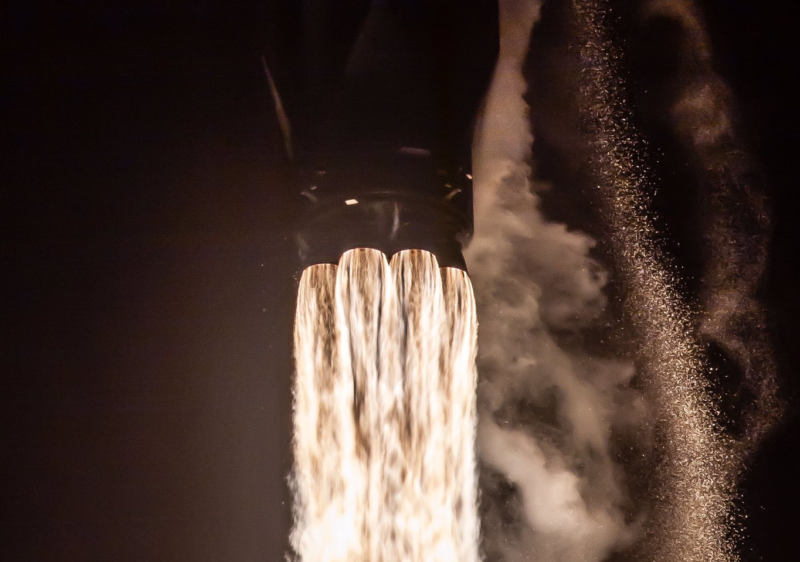
Enlarge / This Falcon 9 rocket has launched three times, including on the Telstar VANTAGE 18 mission in 2018.
SpaceX
10:20pm ET Update: The Falcon 9 rocket launched right on schedule, streaking into the black Florida sky. Less than 10 minutes later, the rocket's first stage landed on a drone ship in the Atlantic Ocean. This particular core has now flown four times.
One hour after launch, the rocket's second stage released its payload of 60 Starlink satellites. As they floated into low-Earth orbit, SpaceX became the company in the world with the most satellites. And with perhaps 20 more Starlink launches planned for this year, they're only getting started.
The only downer on the night is that while the GO Ms. Tree vessel came close to nabbing one payload fairing half, it did not quite make it.
Original post: In 2019 SpaceX launched two batches of 60 Starlink satellites—one experimental, and the second operational. On Monday, the company plans to add 60 more satellites with a nighttime launch of the Falcon 9 rocket from Cape Canaveral Air Force Station in Florida.
If all goes to plan, this mission will be just the first of as many as 20 Starlink launches this year as SpaceX builds up a constellation of satellites in low-Earth orbit to provide global Internet service. SpaceX may begin to offer "bumpy" service by the middle of this year to some consumers.
Following this next launch, scheduled for 9:19pm ET Monday (02:19 UTC Tuesday), SpaceX will have a constellation of nearly 180 satellites in low-Earth orbit, each weighing a little more than 220kg. This will make the company simultaneously the world's largest private satellite operator (eclipsing Planet Labs), while also being the most active private launch company.
Becoming a satellite operator has not been without its challenges for SpaceX. It has had to work closely with the Air Force's 18th Space Control Squadron to track its Starlink satellites and ensure they do not collide with other satellites on orbit. SpaceX has also faced a backlash of criticism from astronomers and dark sky advocates who say its "trains" of satellites have polluted the sky. In response, SpaceX has said it will take steps to make the satellites less visible and disruptive to nighttime skies.
The potential reward for the company, however, is sizable. With its burgeoning constellation, SpaceX has surged ahead of OneWeb and several other competitors seeking to develop low-latency Internet from space. With its highly reusable Falcon 9 rocket first stage, SpaceX also has a decided cost advantage in terms of getting its satellites into space. Capturing just 3 percent of the global Internet market could bring in about $30 billion in revenue.
Monday night's launch attempt will occur on a Falcon 9 first stage that has flown three times previously, in September 2018 (Telstar 18 VANTAGE), January 2019 (Iridium-8), and May 2019 (the first experimental Starlink mission). After launching, the first stage will land on the “Of Course I Still Love You” droneship offshore in the Atlantic Ocean. Another vessel, “Ms. Tree,” will attempt to recover a payload fairing half. The Starlink satellites themselves will deploy at 61 minutes into the mission, at an altitude of 290km.
A webcast of the mission should begin about 15 minutes prior to launch.
Starlink-2 mission.
![SpaceX is now the world’s largest satellite operator [Updated]](https://cdn.arstechnica.net/wp-content/uploads/2020/01/starlink-760x380.png)